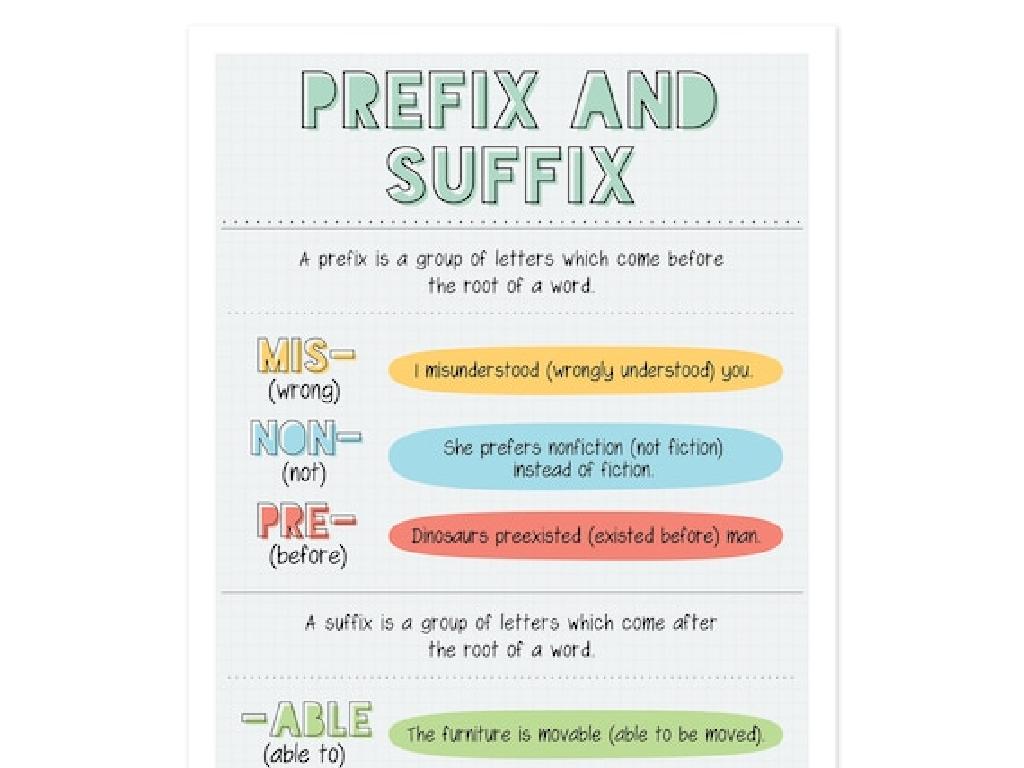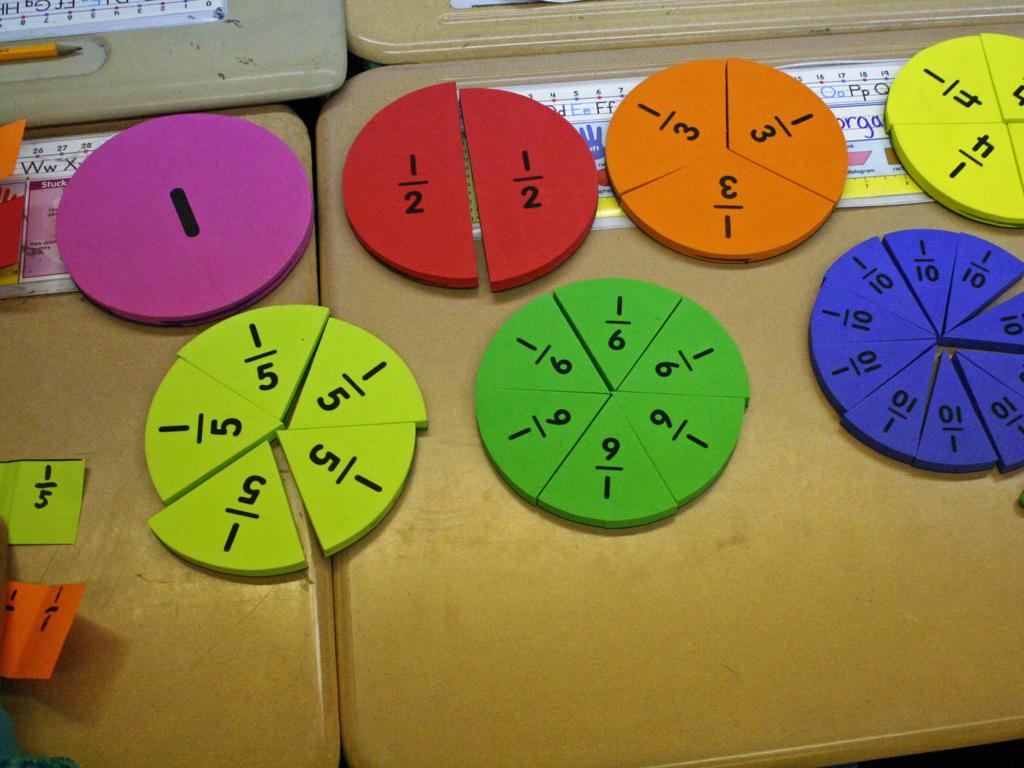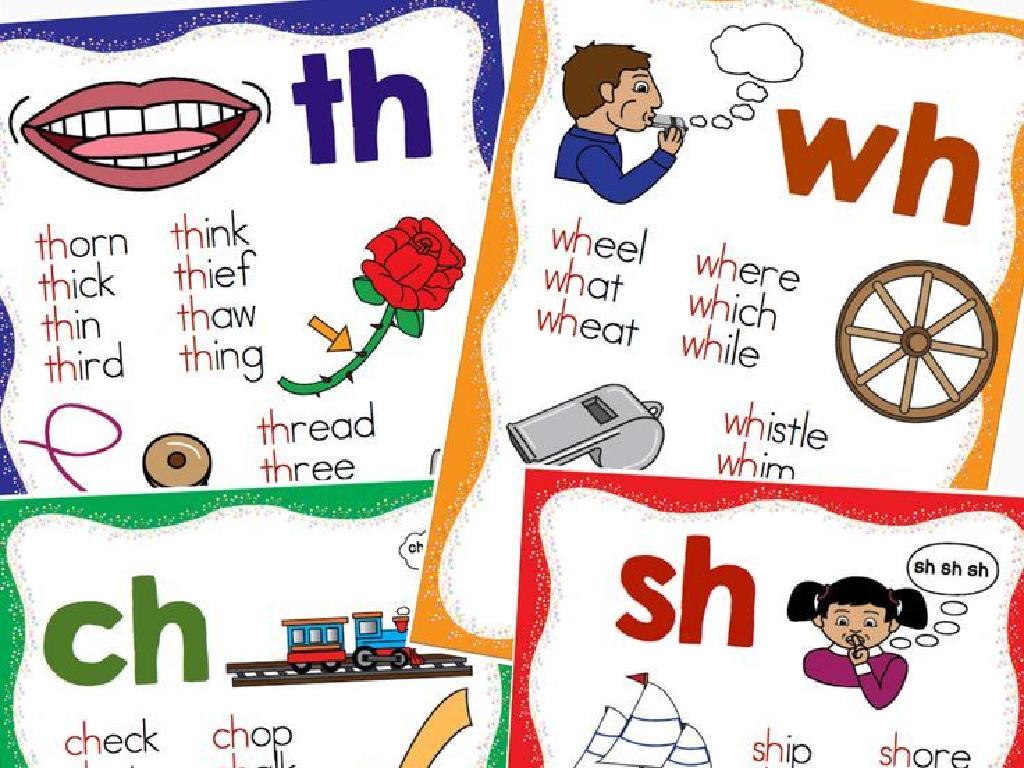Compare Three Numbers - Up To 10
Subject: Math
Grade: Kindergarten
Topic: Comparing Up To 10
Please LOG IN to download the presentation. Access is available to registered users only.
View More Content
Welcome to Math: Comparing Numbers Up to 10
– Greetings, young mathematicians!
– Today’s number playtime
– We’re going to have fun with numbers today!
– Learning to compare numbers
– We’ll discover which are big and which are small
– Numbers up to 10
– We’ll look at numbers 1 through 10
|
This slide is designed to introduce kindergarten students to the concept of comparing numbers. Start the lesson with a warm welcome and an emphasis on the fun aspect of learning math. Explain that comparing numbers is like playing a game where we find out which numbers are bigger or smaller. Use visual aids like number cards or objects to demonstrate the concept. For example, show three apples and compare them with two apples to illustrate that three is more than two. Encourage participation and use simple language to ensure understanding. Prepare hands-on activities where students can practice comparing different sets of items up to 10. This will help them grasp the concept of quantity and number order.
What Does it Mean to Compare?
– Understanding comparison
– Which is less, more, or are they equal?
– Comparing everyday items
– Like toys and snacks – which has more?
– Comparing numbers is similar
– Practice with familiar objects
– Let’s compare using items like blocks or crayons
|
This slide introduces the concept of comparison to Kindergarten students. Begin by explaining that to compare means to find out differences in size, quantity, or value between things. Use tangible examples like toys or snacks to illustrate the concept of ‘less’, ‘more’, or ‘equal’. This sets a foundation for understanding that numbers, like objects, can also be compared in the same way. Encourage the children to think about items they often see or use and how they might compare these items in terms of quantity. For the class activity, have a variety of familiar objects available for the students to practice comparing, such as blocks or crayons, to reinforce the concept.
Comparing Numbers with Fruits
– Groups of fruits to compare
– Look at apples, bananas, and grapes
– Count to find which has more
– Count each fruit out loud together
– Use fingers for counting
– Each finger represents one fruit
– Discover which has less
– Is it the apples, bananas, or grapes?
|
This slide is designed to teach Kindergarten students how to compare small groups of objects by counting. Using familiar items like fruits makes the concept relatable and easier to understand. Start by showing pictures of different groups of fruits and ask the students which group they think has more or less. Then, count each group together with the class, using fingers to represent each fruit. This tactile approach reinforces the counting process and helps with number recognition. Encourage the students to participate by counting out loud and using their own fingers. After counting, discuss the results to identify which group had more or fewer fruits. This activity lays the foundation for understanding comparison and quantity in mathematics.
Let’s Compare Numbers Up to 10!
– Numbers 1 to 10 introduction
– Numbers from one to ten are the first numbers we learn.
– Counting everyday items
– We use numbers to count things like toys or steps.
– Practice counting 1 to 10
– Let’s count together: 1, 2, 3, … up to 10!
– Comparing numbers game
– Which is more, 3 toys or 5 toys? Let’s find out!
|
This slide is designed to introduce kindergarten students to the numbers 1 through 10. Start by familiarizing them with the sequence of numbers and their order. Engage the students by counting common items in the classroom or things they relate to, like toys or steps. Encourage them to count aloud with you from 1 to 10 to practice. Introduce a simple game where they compare sets of items to understand the concept of ‘more than’ and ‘less than’. This interactive approach helps solidify their understanding of basic numbers and prepares them for comparing quantities.
Comparing Numbers: Which is More?
– Comparing numbers on a line
– A number line helps us see which number is bigger or smaller.
– Bigger numbers mean more
– If one number is 6 and another is 8, 8 is more because it’s bigger.
– Examples of number comparison
– Let’s compare 3, 5, and 7 together and see which is the most.
– Practice with number line
– We’ll use a number line to find which of 2, 4, and 6 is the biggest.
|
This slide introduces the concept of comparing numbers up to 10. Start by explaining that a number line is a tool we can use to easily compare numbers. The further to the right a number is on the number line, the greater it is. Use visual examples to show this concept, such as placing numbers 3, 5, and 7 on the line and asking the students which is the most. Encourage the children to practice by using a number line to compare sets of three numbers, such as 2, 4, and 6, and determine which is the biggest. This activity will help solidify their understanding of number magnitude and comparison.
Comparing Numbers: Which is Less?
– Understanding ‘less’ with numbers
– Smaller numbers mean ‘less’
– If we compare 2 and 5, 2 is less because it is smaller.
– Class examples with numbers 1-10
– Let’s compare 3, 6, and 9 together and see which is less.
– Interactive group activity
– We’ll work in groups to find the smallest number in sets of three.
|
This slide is aimed at teaching Kindergarten students the concept of ‘less’ when comparing numbers up to 10. Start by explaining that ‘less’ means a smaller amount or number. Use visual aids like number lines or objects to show that smaller numbers are ‘less’ than larger numbers. Engage the class with examples, asking them to identify the smaller number in a set. For the interactive activity, divide the class into small groups and provide sets of three numbers for them to compare and determine which is the smallest. This hands-on approach helps solidify their understanding of the concept of ‘less’. Encourage participation and praise correct answers to build confidence.
Comparing Three Numbers
– Comparing numbers together
– Finding the most and least
– Discovering the middle number
– Example with three numbers
– If we have 3, 7, and 5, which is biggest, smallest, and in the middle?
|
In this slide, we introduce the concept of comparing three numbers to determine their order in terms of value. Start by explaining that numbers can be arranged based on how many counts they represent. Use tangible items like fruits or toys to demonstrate the concept visually. For example, place 3 apples, 7 oranges, and 5 bananas on a table and ask the students to identify which group has the most and which has the least, then which one comes in the middle. This practical example will help them grasp the concept of comparison and ordering numbers up to 10. Encourage the students to practice with different sets of numbers and objects to solidify their understanding.
Let’s Practice Comparing Numbers!
– Use pictures to compare numbers
– Look at the pictures and decide which has more or less items
– Count with fingers
– Use your fingers to count up to 10
– It’s okay to ask for help
– Practice makes perfect
– The more we practice, the better we get at comparing!
|
This slide is designed to engage Kindergarten students in a hands-on activity to compare numbers up to 10. By using pictures, students can visually assess quantities and use their fingers to count, reinforcing their understanding of numbers. It’s important to create a supportive environment where students feel comfortable asking for help. Encourage them to practice regularly, as repetition will help solidify their comprehension of comparing numbers. During the activity, walk around the classroom to assist students who may be struggling and to provide positive reinforcement to those who are succeeding.
Class Activity: Number Match Game
– Play the Number Match Game
– Match objects to numbers
– Count objects and find the same number
– Collaborate with classmates
– Help each other in matching numbers
– Enjoy learning numbers!
|
This interactive game is designed to help Kindergarten students practice comparing numbers up to 10. Set up stations with different sets of objects and corresponding numbers. Students will count the objects and match them to the correct numeral. Encourage teamwork by having students work in pairs or small groups. Possible variations of the activity: 1) Use different types of objects like blocks, stickers, or fruit. 2) Have a relay race where students find and match numbers. 3) Create a matching card game with objects on one set of cards and numbers on another. 4) Incorporate a storytelling element where each match contributes to a story. 5) Use technology by having an interactive digital matching game. This activity will reinforce number recognition, counting skills, and the concept of quantity.
Great Work on Number Comparison!
– Excellent comparing numbers
– Comparing shows more, less, equal
– Comparing lets us see differences in quantity
– You’re number comparison stars!
– Keep practicing up to 10
– Try with toys, snacks, or books at home
|
This slide is a positive reinforcement for the students, acknowledging their efforts in learning how to compare numbers up to 10. It’s important to remind them that the skill of comparing numbers is useful in understanding quantities and their relationships, such as which group has more or less items, or if two groups have the same number of items. Encourage the students to continue practicing this skill outside of the classroom with everyday items, which will help solidify their understanding and make learning fun. Celebrate their progress and encourage them to keep practicing with different sets of numbers.






